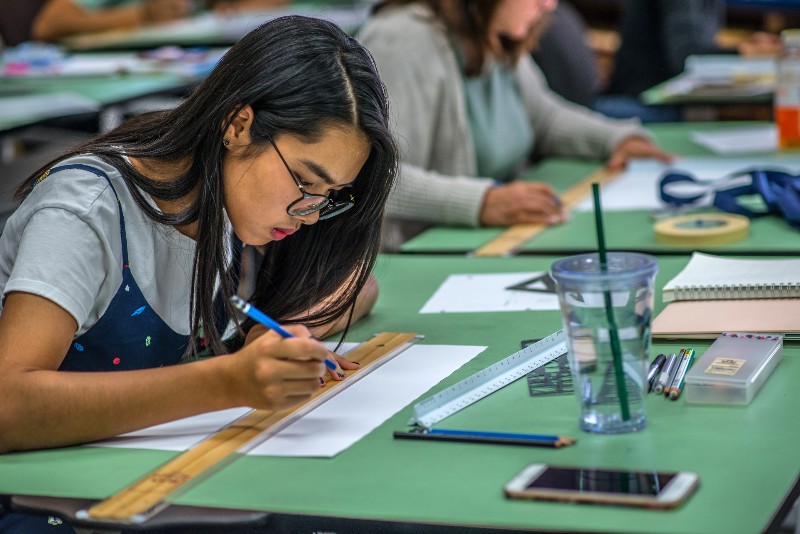By Kathleen Pender
For the first time in almost two years, the three schools that make up the San Mateo Community College District will hold most of their classes on campus starting today. It will be the first time that many students who enrolled at the College of San Mateo, Cañada College or Skyline College since the coronavirus pandemic will see the inside of a college classroom.
Jordan Salgado, who enrolled at Cañada in Fall 2020, is one of them. “It has been difficult with Covid,” he said. “It’s kind of like being on your own.”
The district suspended normal campus operations on March 12, 2020. Since then, almost all classes have been online except for some that were hard to convert, such as the police and fire academies, nursing, dental hygiene and athletics, which returned at various times. Middle College—a districtwide program for high school students who attend school at a community college—returned to campuses in Fall 2021.
A lot has happened since the shutdown. The elected Board of Trustees fired the district’s former chancellor for alleged financial improprieties and redirected $6.75 million in one-time funds from this year’s budget to start a “free community college initiative,” aimed at making college more accessible and affordable. The “vast majority” of these funds will go toward “staffing infrastructure,” according to a board report.
The district, which received three rounds of federal coronavirus-relief funds totaling $42.2 million, distributed $23.4 million of that amount in direct financial aid to students taking at least six units. Students got $1,250 to $2,750 apiece from the third and largest round. “We are trying to alleviate some of the major issues they are facing: transportation, housing and food insecurity as well as the cost of going to school, tuition and books,” Trustee Tom Nuris said. The district used an additional $700,000 from the third round to erase debts that some students owed to the colleges for things like unpaid fees or parking tickets.
In other developments, district staff applied for nearly $100 million in state grants to build below-market-rate student housing on the CSM campus, and Cañada finished its spectacular-looking athletic facility, which is now home to the college’s kinesiology, athletics and dance programs.
They will share space with a health club that will open to dues-paying members of the public starting this summer or fall, although aquatic programs in the two outdoor pools could begin in the spring, said Chancellor Michael Claire, the district’s top administrator.
A Change in Management
The club will be similar to the smaller San Mateo Athletic Club at CSM, which was managed by a for-profit company until district staff took it over Jan. 1, 2022. Both athletic centers were funded with voter-approved bonds, which will be repaid with higher property taxes. Neither of the ballot measures – in 2005 and 2014 – disclosed that some of proceeds would be used to build athletic clubs.
At press time, the district was still awaiting the outcome of a two-year investigation by the San Mateo County District Attorney into Ron Galatolo, who was the district’s chancellor for 20 years until August 2019, when he resigned abruptly and was given the job of chancellor emeritus at his old salary of $467,700 a year. Galatolo was fired from that position in February 2021 for allegedly having undisclosed personal relationships with outside vendors and taking undisclosed gifts from contractors who worked for the district when he was chancellor.
Of course the biggest change since the pandemic was the transformative shift to online education.
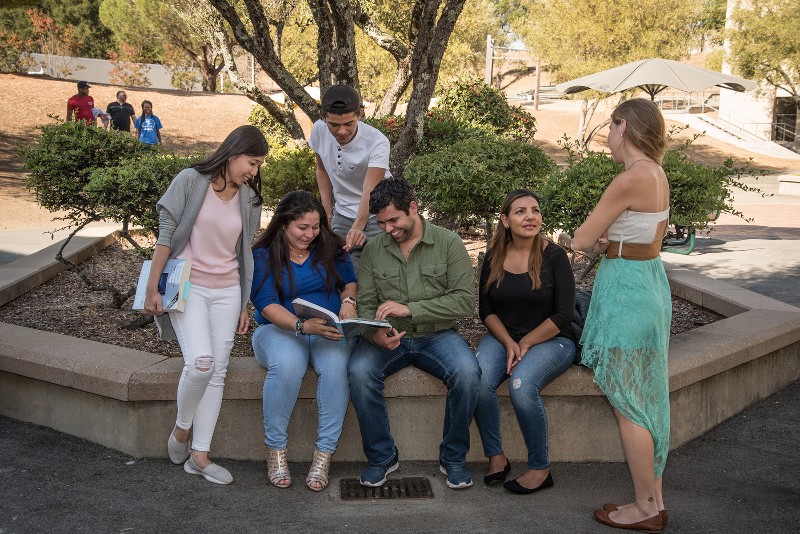
The district announced last February that it would remain primarily remote through the end of 2021. But as the vaccines rolled out last spring and summer, some trustees urged district staff to speed up the reopening and offer at least 30% of courses face-to-face during the Fall 2021 semester. That didn’t happen, which administrators attributed to some students and teachers not wanting to return to campus and the difficulty of revamping course catalogs.
Only 11% of classes at Cañada and 25% at CSM were offered in person last semester. Statewide, 25% of community classes were offered on campus and 10% were hybrid (in-person and online), according to the California Community College Chancellor’s Office.
Richard Holober, the district’s longest-serving trustee, said he was “less than satisfied” with the percentage of in-person classes.
Will Students Return?
That percentage will go up this semester, but it may never return to pre-pandemic proportions. Cañada is slated to offer 54% of Spring 2022 classes on campus and CSM is targeting 65%. That compares with 80% and 85%, respectively, in Spring 2020.
“I think we are going to see a permanent bump” in remote learning, Claire said. Surveys show that 30% to 40% of district students prefer it. Community colleges serve many adults with full-time jobs and families and for them, not having to commute was a big stress reliever, Claire added.
Holober said the district “is not surveying students who have fallen out of the system.”
The colleges now offer five types of classes: wholly in-person, in-person some days and online others, wholly online with a teacher and students participating live, wholly online without any live interaction and live with a teacher and some students in a classroom and others on Zoom.
Guillermo Garcia was struggling when he started attending Skyline in Spring 2020, shortly before the shutdown. “I was having so much trouble school wise, being attentive, understanding content,” he said. The next semester, he switched to online classes through CSM and did better. He could get up and move around and see his classmates and professor at the same time, instead of just focusing on the teacher. But “there were always technical issues,” and he often fell asleep during four-hour classes.
Garcia was happy when his film and communications classes returned to campus last fall, because those subjects are much better in person. “I got confidence working on Zoom every day. I know how to work on a team, interact in a meeting,” he said. “Zoom has a lot to offer you can’t get from a classroom, and the classroom gives you so much you can’t get on Zoom.”
Enrollment Decline
Going online helped the district retain some students who moved away because of the pandemic or the area’s high cost of living. “I think we will have more students choosing online options and my hope is that increases the pool of people using the community colleges,” Trustee John Pimentel said. That could help stem a long-term decline in enrollments.
Total headcount at the three colleges – which includes any person who took at least one credit or non-credit course – fell 27%, from roughly 30,000 in Spring 2009 to 22,000 in Spring 2021, according to state data. That’s slightly better than the average for all 116 California community colleges, which fell 29%.
One bright spot for enrollments has been an increase – especially at Skyline – in the number of high school students taking free courses for college credit on a high school campus. The district’s free college initiative includes $2.5 million to expand this “dual enrollment” program with the hope that more local high-school graduates will head to the three community colleges.The initiative also includes $3 million to expand the district’s Promise Scholars Program, which helps full-time community college students earn associate degrees or transfer to a four-year institution within three years. It provides them with counseling, academic support and money for tuition, fees, books and either food or transportation. Almost half of Promise Scholars are meeting that goal, compared to a district-wide rate around 20%.
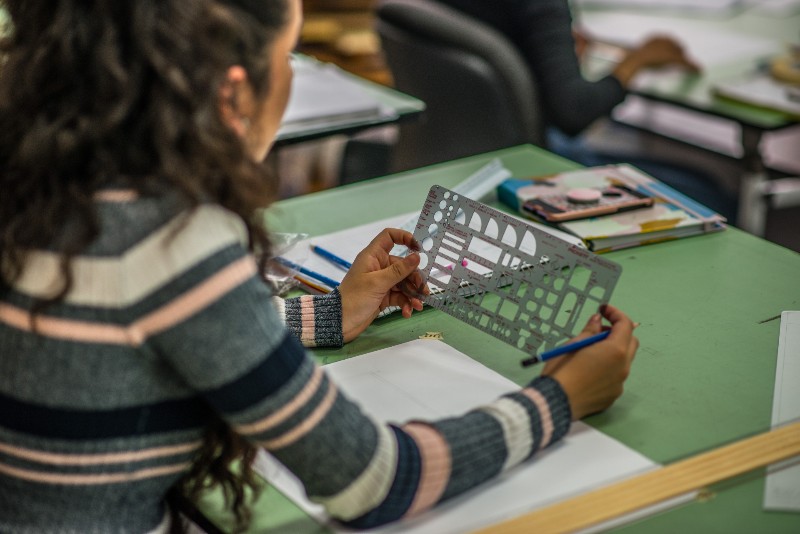
In addition, the district is receiving $2 million in county sales-tax revenues to expand the number of Promise Scholars to 2,500 from 2,000 for two years. The extra $3 million in district funds could boost program capacity to 4,000 by 2023-24.
The remaining $1.25 million from the initiative will provide free textbooks and course materials.
The state’s community colleges charge $46 per unit, or about $1,100 a year for a student taking 12 hours per semester. About a third of the district’s students got a state fee waiver last fall, down from 42% pre-pandemic, but many still struggle with housing, transportation and other costs.
Student Housing
Two years ago, the district began investigating student housing as a way to boost enrollments and help its neediest students. “There was a bill (in the state Legislature in 2019) to allow homeless students to sleep in their cars on community college campuses. We said we owe our students more than this,” Trustee Maurice Goodman said.
That idea got a jump start in September when the Legislature passed SB 169. The bill appropriated $500 million this fiscal year to create affordable rental housing for full-time, primarily low-income students at the state’s public colleges and universities. The bill stated the Legislature’s intent to appropriate $750 million in each of the next two fiscal years for the same purpose. Half of those amounts was earmarked for community colleges.
Schools had only three weeks to apply for a one-time construction grant for “shovel-ready” projects and/or a planning grant to conduct feasibility and other studies. The San Mateo district applied for both grants. It requested $9.7 million for planning and $88.7 million for construction to build apartments for 495 students, including 45 with families, on a CSM parking lot.
The district said it would kick in an extra $10 million from its own funds, which would allow it to allocate 9% of the housing to part-time students, those taking fewer than 12 units per semester.
At the Oct. 27 Board of Trustees meeting, Holober said he was glad the district applied so quickly, but added, “It’s not a good way to run a government public agency.” If the state grants were not available, “and we were just to do this on our own,” the project “could be very different.”
Holober stressed that the board had not discussed spending $10 million of district money to house part-time students, and he was not convinced it was a good idea. In a statement, the district said the board “will determine the exact allocation of the $10 million if the project is approved.”
Administrators expect a decision between March and April. If the district loses the construction grant, it could still get the planning grant and apply for a future construction grant. The California Department of Finance said it received 21 applications for construction grants and 71 for planning grants from 81 individual community colleges.
The board has not addressed what would happen if it won the construction grant but the project goes over budget. “I do have that concern. If we do pursue housing, I’m going to watch it like a hawk to ensure we don’t have a Cañada Building 1 experience,” Pimentel said.
Cañada Athletic Center
Pimentel was referring to the new Cañada College Kinesiology and Wellness Building. Its cost ballooned from $40.7 million when it was first conceived in 2014, to $88 million in 2016 when a design/build contract was awarded, to $121 million by January 2020, according to documents provided by Maxine Terner, a member of the district’s bond oversight committee.
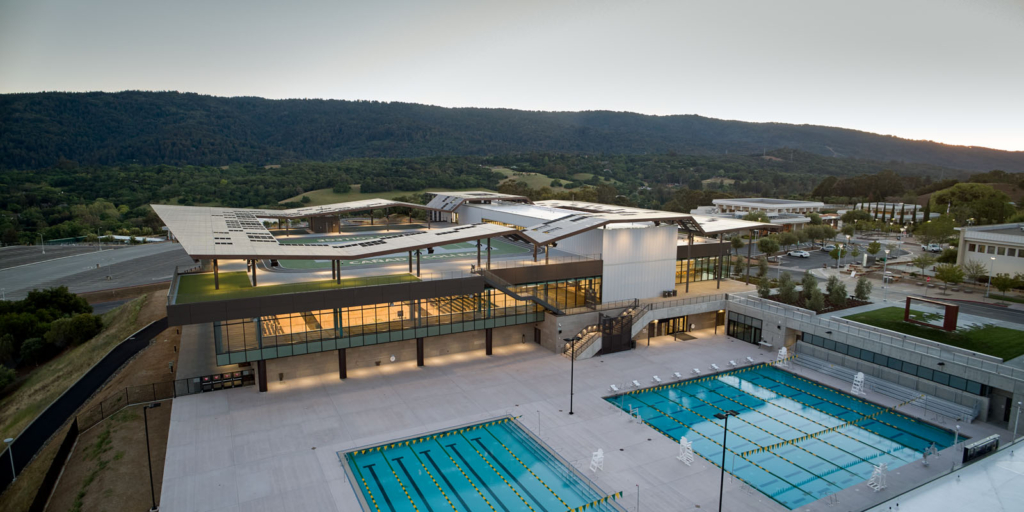
Reasons for the cost escalation included design changes; a parking lot expansion; activating the roof with an outdoor running track, yoga studio and pickleball courts; integrating an alumni “Hall of Fame;” and rising wages, materials costs and “contractor margins.”
The 105,00-square-foot, two-story building includes a competition basketball court, dance studios, a kids’ gym, locker rooms, workout space, offices and one classroom, but it remains largely devoid of exercise equipment except for a weight room reserved for student-athletes. The two pools have been heated since May but were not used last year.
The new facility will include a club for dues-paying members of the public. It’s similar to the smaller San Mateo Athletic Club at CSM, with one major difference.
At the San Mateo club, known as SMAC, students still took most of their physical education classes and used the locker rooms in the school’s old gym. The club and its two pools were used primarily by club members, although students and faculty could join the club at a discounted rate.
At Cañada, the new athletic center replaced a gym that was demolished in 2017. It will house students and club members under one roof. It was designed with one set of locker rooms for students and a much larger, more luxurious set for members. When it opened to students and faculty in May, they were not allowed into the locker rooms reserved for members, raising complaints among some students, teachers and trustees who argued that students should have priority.
“The membership locker rooms opened in mid-September, only after multiple complaints about all of us having to share two sinks and four showers,” said Vera Quijano, an adjunct dance and yoga teacher.
Gym Access Issues
Similar complaints were raised about lack of student access at SMAC. In December, signs in the club were still instructing CSM students to use the old gym for “dressing/changing/lockers.”
A company, now named Exos, managed the club since it opened in 2010. The district said Exos’ fee in fiscal 2021 was $346,421. That appeared to include a 5% pandemic discount. The surplus funded campus activities and offset other college expenses.
Then the coronavirus hit, and membership fell from just over 6,000 to just under 4,000 today. Over the past two fiscal years, the club lost a total of $2.6 million on $8.1 million in revenues. (The author of this article is a SMAC member.)
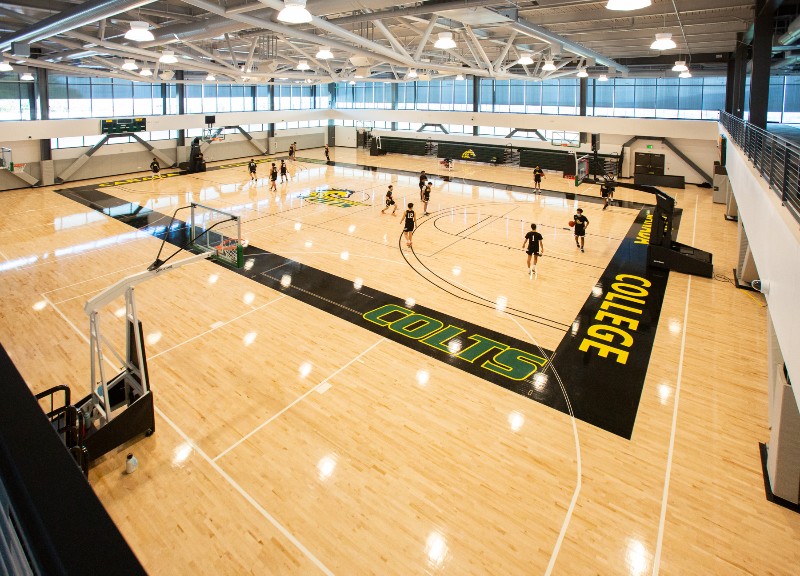
As the Exos contract came up for renewal, some trustees began questioning whether students were being shortchanged in the pursuit of profits. After months of debate, the board decided to end its relationship with Exos and manage SMAC in-house starting this year, with the goal of breaking even. SMAC employees could reapply for their jobs, and many were rehired.
“What we are doing at SMAC is switching from a private, for-profit gym operator to an academic priority, so classes and teachers and athletic programs should get first use of the facilities,” Pimentel said.
Claire said there will be no areas off limits to students at SMAC, which is changing its name to the College of San Mateo Athletic Center, nor at the Cañada College Athletic Center when it opens later this year. District staff will also manage the Cañada club; they expect it to have 3,000 members initially, growing to 5,000 to 9,000 over time.
“You are going to see a more collaborative process in terms of scheduling (use of the two facilities). The times that tend to be popular with members are not necessarily popular with students,” Claire said.
He emphasized that “the world has changed while we’ve been sheltering in place. It’s incumbent upon our colleges, and higher education in general, to change how we deliver our courses and services. We have to be extra mindful of a widening disparity in socio-economic situations among many of the people we serve. We have to change because the world around us has changed.”

